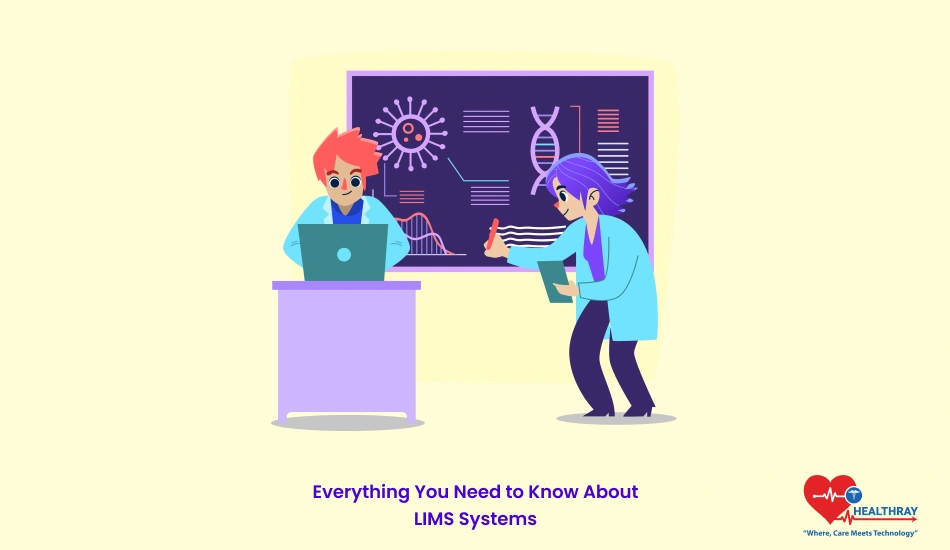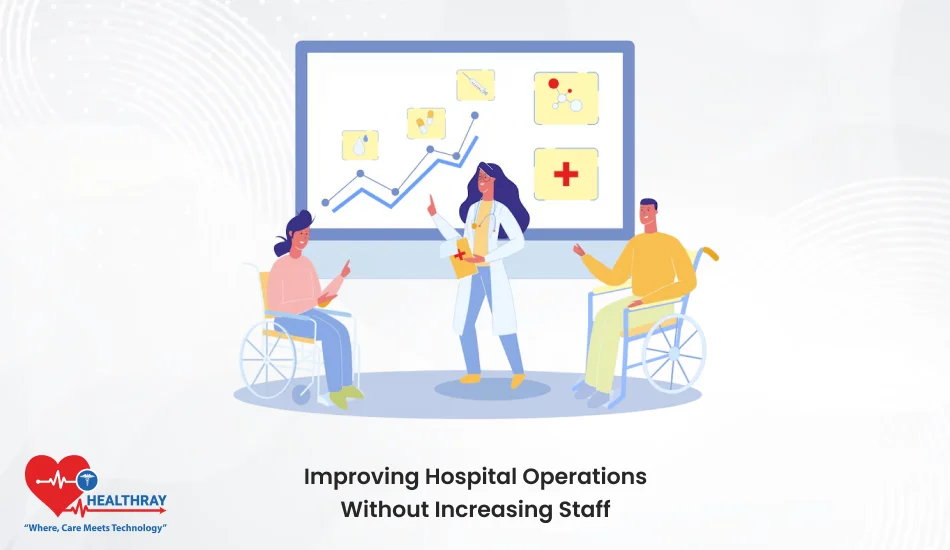Have you messed up with the physical lab reports? And, it is extremely difficult to find the single patient reports. However, you can make it easy by implementing LIMS systems in your laboratories. You should know about the LIMS system in detail, let’s explore.
What is a LIMS system?
A Laboratory Information Management System, or LIMS, is a needed software to help labs improve the efficiency of their workflows and to manage data with greater precision and in compliance. The basic function of LIMS is to provide laboratory with a centralized platform for sample management, process automation, and compliant to stringent regulatory requirements. Whether you’re a lab owner focused on improving productivity or looking for a way to keep up with regulatory demands, understanding what Laboratory Information Management System does can be a major asset. This guide goes to the heart of the LIMS’s functionalities, how it can make a difference in your lab, the system types available, and what to think about choosing a system.
Core Functions of a LIMS System

- Sample and Data Tracking: The main task of LIMS. is monitoring of samples during its life. Through the assignment of barcodes and the automatic tracking of the positions and conditions of samples, LIMS minimizes the chances of samples being lost or duplicate samples. Lab staff should also be able to oversee results in real time, for greater efficiency and reduced turn-around times.
- Inventory Management: LIMS systems provide inventory management capabilities for monitoring of supplies, reagents, and equipment, as well as for signaling of low-stock items or stock expiration chemicals. This functionality saves labs time and money, by avoiding unnecessary delays and roadblocks from obsolete supplies.
- Reporting and Documentation: Automated reporting features assist laboratories in documenting results and generating reports with minimal operator input. Through the provision of flexible templates, LIMS not only allows laboratories to ensure consistency in data formats for efficient transfer compliance with the authorities, but it also drastically reduces the amount of time taken for documentation.
- Quality Control and Compliance: In-built quality control functionalities are useful to help the labs to maintain data integrity while meeting all the regulatory requirements (such as FDA and MHRA) . Compliance workflows, audit logging, and automatic verifications allow for audit preparation and data integrity to be preserved for testing and persons. LIMS is designed to decrease labor, to optimize the process, and to maintain data integrity, hence it is a very effective tool for laboratories of any size and in any scale.
Advantages of Implementing LIMS in Your Lab
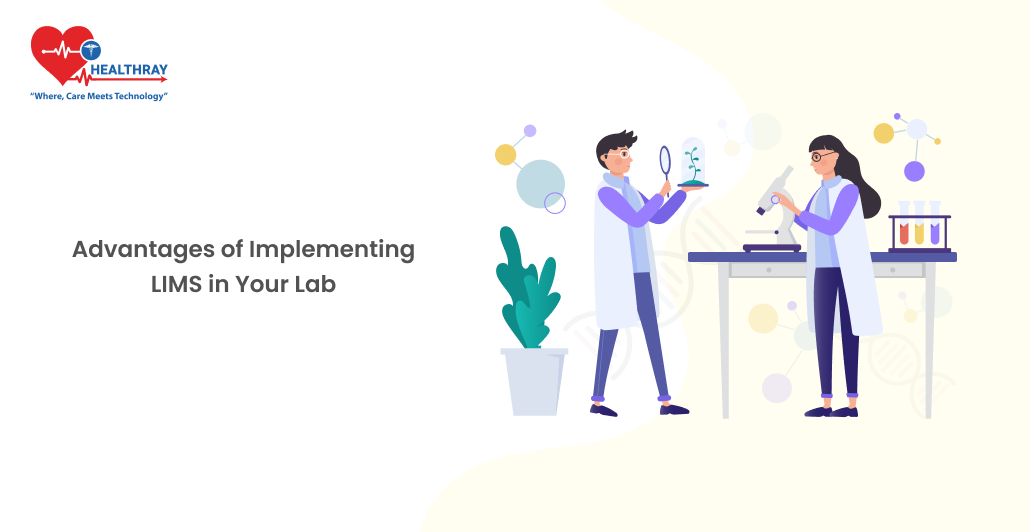
Implementing LIMS has a number of benefits to the laboratory, particularly in terms of efficiency, accuracy and compliance. Here’s a look at some of the main advantages:
- Enhanced Data Integrity: LIMS systems utilize automated traceability with bar codes and centralized data management to minimize errors by humans. Data analysis can be used to generate client and regulatory trust. By improving the data’s reliability, the laboratories will be in a much stronger position to do analysis, report the findings, and interpret the results with confidence .
- Streamlined Workflow: Through pre-specified workflows LIMS offers normalisation in laboratory activities, by standardizing processes and thereby removing re-work and freeing staff time to perform value-added tasks. This automation reduces turnaround times, prevents operational jams and overall laboratory efficiency.
- Regulatory Compliance and Audit-Readiness: In labs LIMS software is employed to meet regulatory requirements (eg, FDA, ISO and regulatory agencies). Using the built-in audit log and compliance pipelines, it is easy to manage logs so that consistent audit logging is possible and audit pipelines are set up which reduce the risk of costly audit failure.
- Reduced Operational Costs: Automating LIMS data management tasks and reporting functions frees up administrative work from manual labor. Labs can use their resources better, minimize waste due to supplies that have been sitting for too long expired, and automate their reporting—all contributing to cost savings in the long run.
All these advantages highlight why LIMS is a force to be reckoned with for laboratories with high ambition for accuracy and operational productivity.
Types of LIMS Systems: Traditional vs. Cloud-Based Solutions
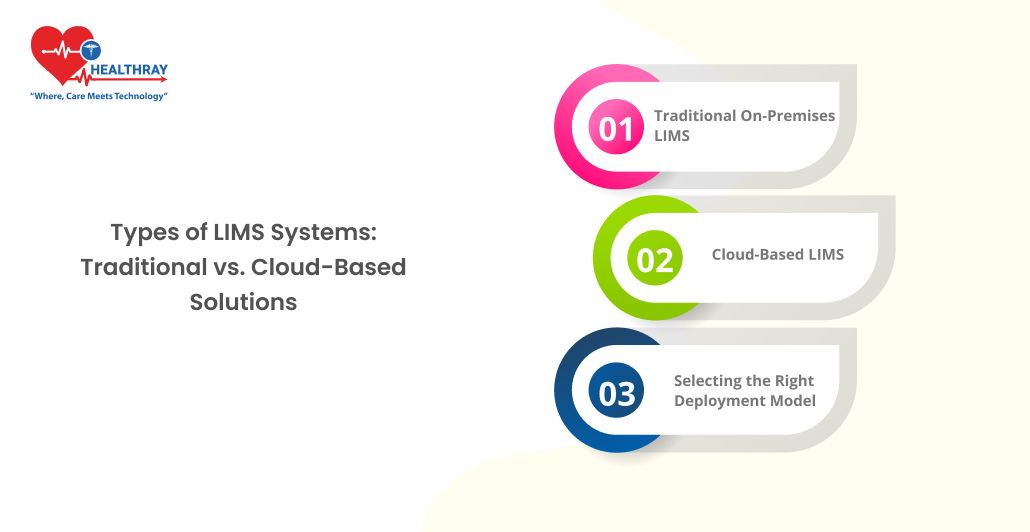
The decision between the traditional on-premise LIMS and cloud-based solutions requires to consider the pros and cons associated with each solution.
Traditional On-Premises LIMS:
Such LIMS is set up and managed by themselves in the own on-premises servers of their laboratory. Labs that require high levels of security or need full control of their data may opt for this model. Off-site systems provide for a great level of customization, however, come at a relatively high initial cost – it is a special system of IT engineering consultant solutions, and needs to be constantly maintained. Such systems could be less general, especially for labs that plan for “expansion” or “remote operation” when they conceive the lab.
Cloud-Based LIMS:
Cloud/Software-as-a-Service (SaaS) LIMS systems operate over a remote server maintained and owned by the LIMS vendor. As labs are able to see everything about the data, this model is suitable for multi-site labs or groups of labs with access to the data, anywhere, anytime. Cloud-based LIMS, in general, cost less to get started up, and require less information technology (IT) maintenance, since the vendor is responsible for keeping security systems and IT maintenance updated in the cloud. Mostly, but most of the solution provided in the cloud is also massively scalable, so that labs can scale its adoption as needed. However, this type of model requires a laboratory to take it to a third‐party vendor with the laboratory’s data, which could lead to security concerns.
Selecting the Right Deployment Model:
Selecting a traditional or a cloud-based LIMS finally depends on the lab-specific needs. Labs with limited area/multiple locations may also find the cost and flexibility advantages of cloud-based LIMS appealing. For larger labs, or labs that have special compliance or data security requirements, control/configurability of an on-premises system may be more desirable.
Persons that are aware of the differences among these types of LIMS systems can help labs to decide which solution suits their current and upcoming needs best.
Key Considerations When Choosing a LIMS System
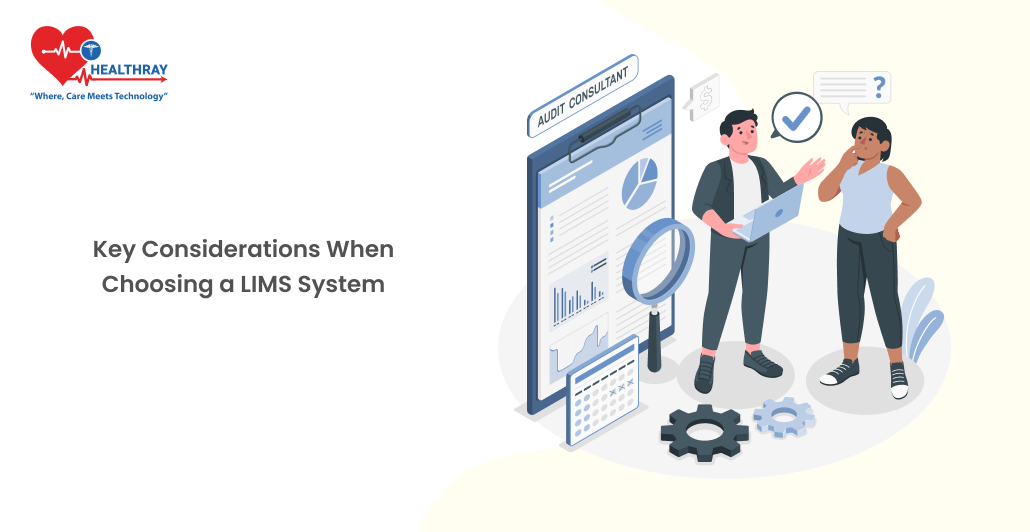
Selecting the right LIMS system is of significant concern to lab owners. Below are some of the most relevant factors to be taken into account before a decision.
- Laboratory Needs and Size: Start by assessing your lab’s daily workflow, including sample volume, testing complexity, and specific data tracking needs. For larger, or laboratories with complex workflows, more robust and flexible features may be required than simpler, smaller laboratories.
- Scalability and Customization: As labs and labs get larger and larger, increasingly with their lab data, lab data needs and workflow, the respective “lab size” requirements grow in tandem. Scalable LIMS can handle increased sample throughput, increased number of users, and, theoretically, new test capabilities. Not least, customization is also a point to be noted that, for example, a different lab would have a different workflow, easily exchangeable to suit the lab.
- Integration with Other Systems: The majority of laboratories employ a combination of instruments, such as Electronic Lab Notebooks (ELNs), lab equipment, and data analysis software. Make sure the LIMS that you choose is capable of being integrated with these systems to facilitate a seamless data sharing process and better lab workflow.
- Cost and Budgeting: Linearity of price is dictated by the number of features provided, the type of deployment model, and degree of customization. Along with the initial investment, think about the total cost of ownership (setup, licensing, maintenance, and training). Cloud systems offer the potential for more stable per-unit pricing, whereas on-premises systems are more expensive upfront but cheaper operating costs.
- User-Friendliness and Training Requirements: Since lab personnel will use the system on a daily basis, the LIMS will be designed to be easy to use and straightforward to operate. Training, customer service, and troubleshooting resources should also be readily available from the provider.
Taking these factors into account labs will be able to take informed decisions in line with their operational, financial and workflow requirements.
Conclusion
Besides the advantages of high accuracy in data, simplified regulatory compliance, and improved productivity, LIMS have become part of modern labs. The horizon for LIMS is promising because of the growing need for digitalized and automated solutions, in particular of cloud-based solutions for scalability and expandability emplaced in several labs. That will be through a safe, and flexible solution in LIMS which can, on its end be changed to a required laboratory use. This will enable companies, for example Healthray.com,to set standards as laboratories solely concentrate on finding results with zero roadblocks concerning operation.
The purchase of a LIMS for lab and pathology owners is essential for enhancing productivity and data quality, which are crucial for preserving a competitive edge, in addition to meeting industry standards. Using the right Hospital Management System solution, Labs can satisfy compliance needs, streamline work flows, and prepare for the next stage of laboratory science.
